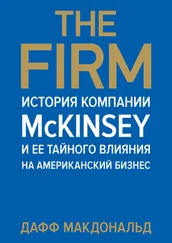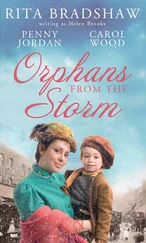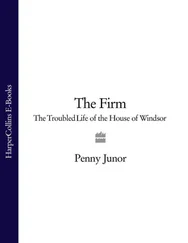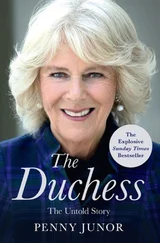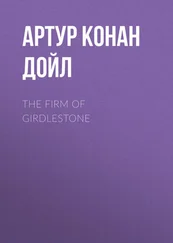He then spent several months acquiring a fleeting overview of how the world works, before beginning at the Royal Military Academy at Sandhurst as an officer cadet in January 2006. For more than a month he did work experience in the countryside – first on a small, isolated Duchy farm getting up early to milk cows and bring in the livestock, and then at Chatsworth, in Derbyshire, the stately home of the Devonshire family, set in a thousand acres of parkland, learning about estate and land management. There followed a three-week stint in the City of London for a crash course in the financial sector, where he went to HSBC, the bank, and amongst other things learnt about the financing of charities, and institutions such as the Bank of England, Lloyd’s of London, the Stock Exchange, the Financial Services Authority, the Family’s firm of solicitors, Farrer and Co, and Billingsgate Market, to learn about the Worshipful Company of Fishmongers and the regulation of the fish trade. He spent a couple of weeks with the RAF Mountain Rescue Team in North Wales; a couple of days volunteering at the Royal Marsden Hospital in London, pushing trolleys round the wards and manning the hospital radio station; and a few days at Centrepoint, the charity for the homeless in London of which he became Patron in September 2005 – his first patronage. He also spent a few days with the Football Association, where he is Patron Designate, and keen to promote the health and fitness side of football – the good things that sport can do for young people. All useful stuff for a man who will be King.
The programme was devised with the help of Jamie Lowther-Pinkerton, a former SAS man in his mid-forties, who was appointed part-time Private Secretary to Princes William and Harry shortly before William finished university. He came with all the right credentials. A professional soldier for twenty years – he served in the first Iraq war and the Balkans – he now works as a part-time consultant to an international security firm and co-runs a company called Objective, that advises gap-year students and others on how to stay alive and avoid trouble when travelling abroad. Ewan McGregor and Charley Boorman consulted him before setting off round the world on their motorcycle odyssey, The Long Way Round. He is an old Etonian, married with three young children – and won an MBE in the early 1990s, busting drug cartels for the government in Columbia. And he came with built-in experience of working at Clarence House. Aged twenty-three, he did a stint as equerry to the Queen Mother, and no doubt his stories about his experiences with their great-grandmother will have endeared him to the young princes who were very involved in his selection.
He had been dozing in a frozen trench with fellow Irish Guards somewhere between West and East Germany, when he got a call telling him he had been chosen for the job. Within forty-eight hours he was having lunch with the Queen Mother at Clarence House, nervously discussing how best to judge distance when flicking peas into a crystal chandelier with a fork.
Some time later, after a boisterous stag party, he invited everyone – already well-oiled – back to his equerry’s room (with free bar) at Clarence House. It was the night before the Trooping the Colour and the Queen Mother was in residence. As he tells the story, ‘The next morning, with the private secretary eyeing me darkly and my room strewn with empty bottles and glasses, I crawled into my uniform just in time to attend Queen Elizabeth the Queen Mother as she mounted the carriage to take her to Horse Guards. “Did you have a party here last night, Jamie?” I stared at my boots and mumbled, “Ma’am, I’m terribly sorry. I hope we didn’t disturb you,” knowing full well we had. “I’m so glad to see the place being properly used,” Her Majesty sparked, hopping into the carriage.’
Sandhurst is no holiday camp. It is forty-four weeks of getting up at dawn, polishing boots, ironing uniform, intensive drill sessions and punishing physical exercise. It is tough, and there are no concessions for princes. Like every recruit, William, aka Officer Cadet Wales, was confined to barracks for the first five weeks with no visitors, no alcohol, and had his trademark floppy blonde hair summarily cropped. But he knew what he was in for. Prince Harry was at Sandhurst ahead of him – he enrolled in May 2005 – and has done predictably well. There is every chance that the Army will be his career for the foreseeable future. It clearly can’t be a career for William – he will probably do no more than a few years – but it will keep him out of the limelight and away from the prying eyes of the press for a bit longer.
His girlfriend, Kate Middleton, however, has had no such escape and is frequently trailed by photographers. When Lady Diana Spencer was in the same boat, the Palace did nothing. She was a private individual and there was no certainty that she would ever be anything else. On the face of it, nothing has changed twenty-five years on. Kate Middleton is also a private individual and not entitled to any royal protection. But there is a very acute understanding this time around that the only reason Kate is being trailed by photographers is because she is dating Prince William and Clarence House recognises that they have a ‘duty of care’ towards Kate, whatever the eventual outcome of the relationship. In October 2005, Harbottle & Lewis, lawyers acting for the twenty-three-year-old – and it is no coincidence that they also act for the Prince of Wales – fired a warning shot across the bows of the media. In a letter to the editors of national newspapers and magazines they set out a number of aspects of her press coverage that they were unhappy with, mostly to do with her private life and pointed out that the behaviour of some photographers amounted to a breach of the Press Complaints Commission code. This states that ‘it is unacceptable to photograph individuals in private places without their consent; the definition of a private place being “public or private property where there is a reasonable expectation of privacy.”’
The media may well ignore the warning shot – sadly the PCC has precious few teeth – but, even if it does, William and Kate already know one another. When Diana was under siege, her relationship with Prince Charles was still in its infancy. Sneaking into the safe houses of friends to meet for a clandestine weekend when everyone was on their best behaviour is not the same as living night and day with someone for two years in a Scottish farmhouse, shopping, cooking, cleaning and taking turns to do the washing up. What Diana saw was a glamorous prince; what Kate has seen is the real man. Currently aged twenty-four she is older and wiser than Diana was and her eyes are wide open. She shows no signs of being affected or spoilt in any way by the attention and she knows full well that marriage to a royal is no guarantee of a fairytale life. She and William have seen each other in a bad moods as well as good, in dressing gowns as well as ball gowns, in sickness and in health, in the bitter cold of a Fife winter and when the stress of exams threatens everyone’s sanity.
The enforced separation of Sandhurst will be perhaps the biggest test of their relationship yet, but the longer they are seeing one another, the louder grows the speculation that Kate Middleton might one day be Queen of England. The Prince of Wales was told by his father twenty-five years ago that he had to make his mind up about Diana. And Charles has given much the same counsel to William. Friends say he has told William that if he is going to split with Kate, or if he is not absolutely certain that she is THE ONE, then he should break it off sooner rather than later – before the press decides for him. Charles’s great fear is that William might end up marrying Kate because he is pressured into it – and make the same mistake he made.
Читать дальше
Конец ознакомительного отрывка
Купить книгу


